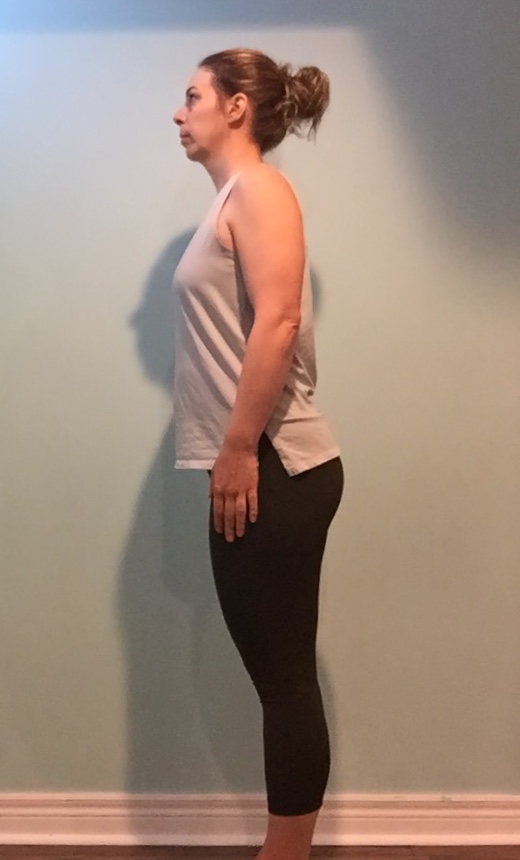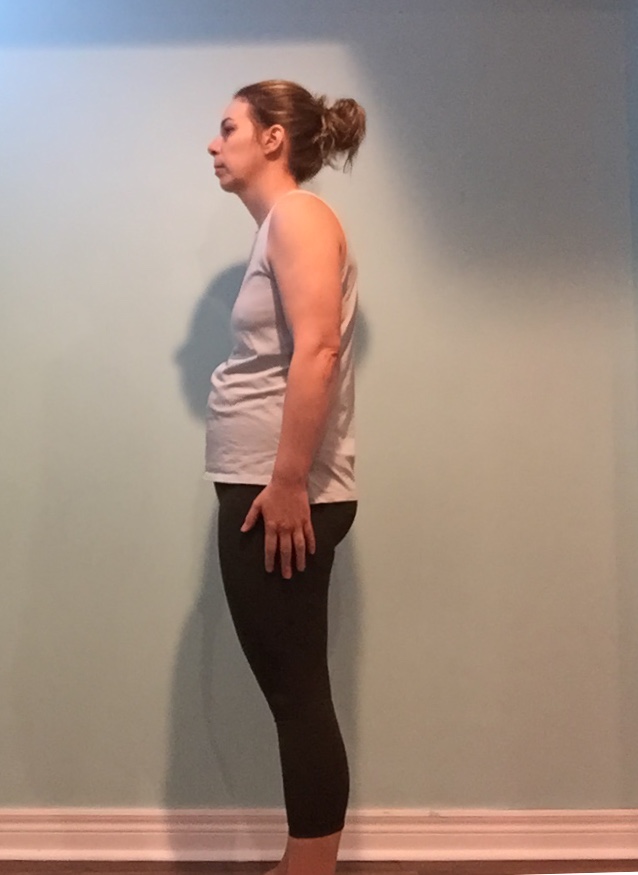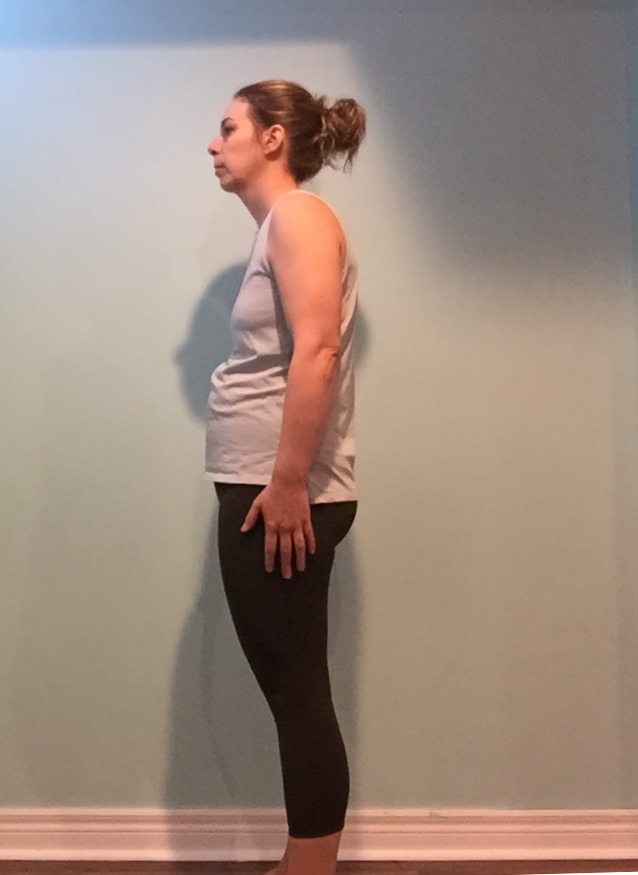Ready For Impact Post-Pregnancy? Here’s What You Need To Know First
After the birth of my first baby, almost 7 years ago, I took the 6-week clearance as permission to go hard or go home. I began strength training like a bodybuilder without a second thought.
The 6-week clearance is the guideline most women use to give themselves permission to go hard. But most health care providers aren’t really training specifically on how to provide exercise advice.
Not once did my doctor mention abdominal separation or how my pelvic floor was stressed during pregnancy and birth. And no one mentioned
The women at my gym were praising my efforts and admired how committed I was to
But…
It wasn’t until after my second baby was born, I learned how wrong I (along with most fitness professionals) was about pregnancy and postpartum fitness
I was diagnosed with both a grade 1-2 pelvic organ prolapse as well as a 2-3 separation between my left and right rectus muscles (DRA). This was an eye opener and changed how I training myself and my clients. It’s a low blow when you feel like you’ve been living this healthy and active lifestyle, only to learn you’ve been possibly doing more harm than good.
If I wasn’t properly assessed by a pelvic floor physiotherapist, I would have walked the earth believing that peeing pants during my workouts and
You may find yourself on the hunt for a mom and baby fitness class or something high-impact to get back into pre-pregnancy form, but many of these well meaning coaches who offer these classes aren’t exactly qualified to coach postpartum women. This post explains exactly when you need to know and do when returning to fitness after having a baby.
The Impact On The Pelvic Floor
The pelvic floor is like a woven basket that provides structural support, organ support, helps to maintain urinary and fecal continence, aids in sexual function and stabilizes connecting joints. Pregnancy can put a lot of stress onto the pelvic floor due to the weight of the baby and alignment changes that take place.
During pregnancy, the pelvic floor becomes lax in preparation for birth because of the hormone called relaxin and is especially vulnerable in the third trimester. Post-pregnancy, relaxin is still floating around for 3-6 months after you’ve weaned from breastfeeding. You read that
So those programs promising to get your sweat on to drop inches in no

The pelvic floor is a dynamic muscle and it needs to move as the body moves. With the structural and hormonal changes along with high impact training during pregnancy, the pelvic floor can become hypertonic (tight), hypotonic (weak), or both and unable to meet the demands of both pregnancy and training at a high-intensity. And this may not resolve itself after 6-weeks post-pregnancy either.
What about Diastasis Rectus Abdominis (DRA)?
Diastasis Rectus Abdominis (DRA) is classified as the unnatural separation of the left and right rectus muscles. This means your left and right abdominal muscles separate. With that being said, this is a perfectly natural part of pregnancy. 
In the picture above, you see some doming just above my belly button. This occurs when your core isn’t managing intra-abdominal pressure properly and the air is being forced through the abdominal separation (DRA). This isn’t necessarily and issue to be alarmed of depending on if you’re able to maintain tension in the abdominal wall and the Linea Alba. Read more about DRA here.
Check out how you can do a self-assessment for Diastasis Recti in this short video.
For many postpartum women, DRA has been associated with negative body image due to the aesthetics of the abdomen, musculoskeletal pain, and dysfunction, as well as pelvic floor dysfunction. This is especially important in your post-pregnancy fitness programming.
Now, I’m not trying to scare you will this information. Sadly, women aren’t being educated when it comes to pregnancy and postpartum fitness by their health care providers and coached alike. This doesn’t make them bad at what they do, believe me. It’s simply because this education isn’t a part of their training and certification requirements.
So What’s A Girl To Do?
When thinking about returning to fitness after giving birth, it’s important to remember this is far from a one size fits all deal. Every pregnancy, birth experience, and post-pregnancy healing process is different and what you need address is where you’re at today. Keep in mind, you may find this changes on a daily basis as life with baby and kids is never the same show twice.
It’s best to address breathing and alignment in the very beginning, yet this is most often overlooked in post-pregnancy training. This will allow optimal function within the deep core system reducing the impact on the pelvic floor
In this breathing demonstration, you will learn how to do a diaphragmatic breath with a pelvic floor contraction (otherwise known as a kegel). If 
In the first picture, I’m standing in a neutral position with my ribs stacked over my hips. This allows the diaphragm and, pelvic floor, transversus abdominis and multifidus to work in unison. This optimizes core and pelvic function.
In the second picture, you will notice an anterior pelvic tilt. This is the most common alignment during pregnancy and postpartum which shifts the position of the diaphragm and the pelvic floor, making the core system work harder. Addressing alignment will greatly reduce pelvic health symptoms like stress incontinence and other injuries.
As your belly grows during pregnancy, you will also notice your alignment shift and movement patterns change. Typically during pregnancy, the pelvis anteriorly tilts forward which will inhibit hip mobility and places stress on the deep core system (diaphragm, pelvic floor, multifidus, and transverse rectus
Running, which is popular in many mom and baby boot camps isn’t recommended in the first 4-6 months post-pregnancy according to Jessie Mundell. And she says even that may be too soon but it entirely depends on
Before beginning any running or jumping in your fitness programming, it’s best your pelvic floor is healed and you aren’t having any pelvic health symptoms like a peeing while you’re running (or at anytime), and the feeling of heaviness or bulging in your vagina which is the indication of a pelvic organ prolapse.
Training Your Core
Traditional core training like planks (and other
You may notice something like a doming or
Again, DRA is perfectly normal and nothing to be too alarmed of, but isolating your abs in certain exercises can exacerbate it.
Exercises To Avoid While Healing DRA:
- Planks or any other
front loaded move like push-ups - Overhead presses
- Crunches or v-sits
- Hangs or Pull-ups
So when you’re rebuilding your core after birth, use these strategies first.
Palloff Press. You will be rotating your spine a lot in motherhood and your needs a strong and stable core to support it to prevent herniation of the disks.
Learning to maintain core control doesn’t begin with a crunch or a plank. And most of us are doing it with improper abdominal control, anyway.
https://youtu.be/fYOHwbJEZnk
Ya Gotta Train Your Glutes
As your structure changes during pregnancy, meaning your belly grows and your pelvis anteriorly tilts, your glutes will turn off. Yep, the stop working for you. So if you noticed some lower back pain, it’s probably because your bum got a little lazy.
This is also another common aspect missed in postpartum training. Your glutes play a major role in your core and pelvic floor function. If your glutes aren’t working for you, your adductors, abductors, hip flexors, and spine are going to compensate. But they also assist in to stabilize your spine. So if you have some back or hip pain going on, your glutes are likely why.
Then you can move on to strengthening your glutes with goblet squats,
Mobility
Mobility is far from the sexiness you see on social media. There’s
Here’s the thing, your needs the ability to move or be moved freely and easily before getting back into
Mobility helps you to stay injury free by controlling range of motion as well as helping you maximize your strength building potential. Without proper mobility, other muscles will begin to compensate (like your pelvic floor)
Remember how I mentioned the change of your alignment during and post pregnancy? Your alignment will affect your overall mobility
Your mobility needs to be looked at the same way as you would look at your strength, power
Adding in mobility into your
Examples of mobility work.
- Myofascial work like foam rolling or ball rolling. Here is an example one of my
go to - Bodyweight movements, like squats or lunges.
The Takeaway
When getting back into postpartum athleticism you need to build the foundation before returning to impact through rehab.
And pelvic floor dysfunctions tend to take place because of this missed step. Breathing, alignment, mobility and muscle activation all play a major role in overall function in not only the core and pelvic floor, but performance as well.
This doesn’t only apply to elite athletes, either. All women, from recreational athletes and beginner
Most women who’ve recently given birth are typically sedentary or less active in the third trimester. Jumping right into demanding programs (yes even some marketed to moms and babies), can be risky and lead to incontinence and pelvic organ prolapse, not to mention be the main culprit in
Taking the steps to address your body as a whole before returning to training will ensure you have a
Ready to maximize your postpartum lifting performance? Get my favourite training strategies in my free Post-Baby Strength Training Handbook. You will learn to minimize pelvic floor dysfunctions, and improve lifting power in both pregnancy and postpartum.
Resources:
- Relationship Between Interrectus Distance and Symptom Severity in Women With Diastasis Recti Abdominis in the Early Postpartum Period. Phys Ther. 2018 Mar 1;98(3):182-190. doi: 10.1093/ptj/pzx117. https://www.ncbi.nlm.nih.gov/pubmed/29228344
- Pelvic floor muscle training for prevention and treatment of urinary and faecal incontinence in antenatal and postnatal women. Cochrane Database Syst Rev. 2017 Dec 22;12:CD007471. doi: 10.1002/14651858.CD007471.pub3. https://www.ncbi.nlm.nih.gov/pubmed/29271473
- Pelvic floor muscle activity in different sitting postures in continent and incontinent women. Sapsford RR1, Richardson CA, Maher CF, Hodges PW. https://www.ncbi.nlm.nih.gov/pubmed/18760158
Symptomatic pelvic organ prolapse and possible risk factors in a general population. Am J Obstet Gynecol. 2009 Feb;200(2):184.e1-7.
